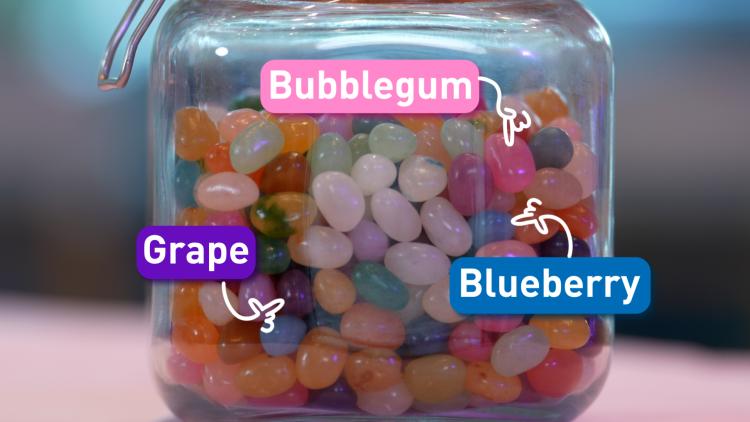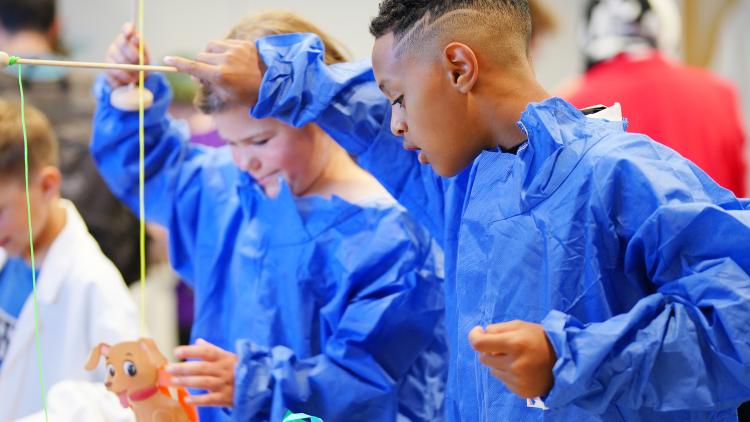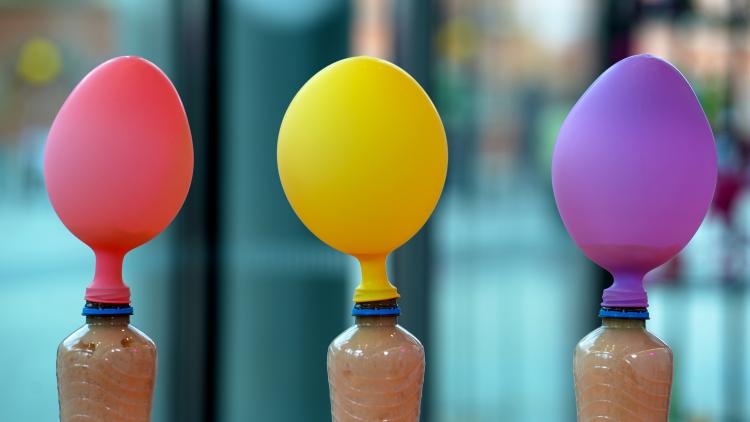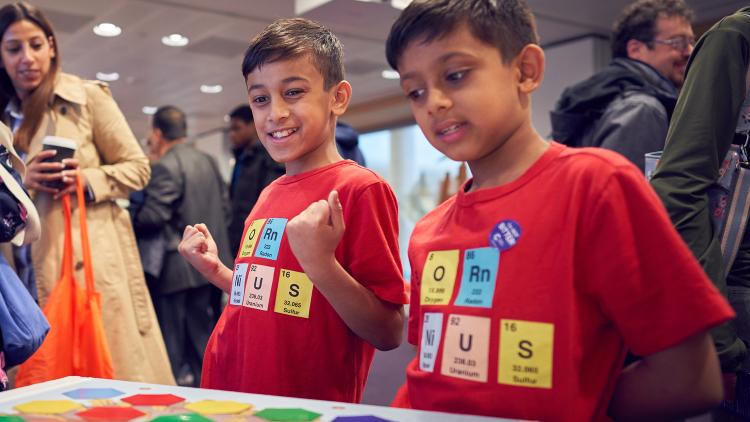Make a lava lamp
This activity will take 30 minutes, is for ages 7 to 10 with supervision needed.
Look at how water and oil behave when mixed together.
The way these liquids interact in your kitchen is the same as how fats and water interact in a living cell.
What you'll need
- A clear plastic bottle or jar
- Some water
- Food colouring
- Vegetable or sunflower oil
- Alka-Seltzer tablets
What to do
- Put some water in the bottom of the bottle with a few drops of food dye or a squirt of paint.
- Carefully add the oil, stopping at least three centimetres from the top of the bottle.
- Allow the oil and water to settle into two separate layers.
- Ask your adult to help you break an Alka-Selzer tablet into pieces (or use a teaspoon of baking powder), and start adding them to the bottle. Remember to leave the lid off.
- Watch as the coloured bubbles rise through the oil and sink back down – like wax in a lava lamp.
- Once it stops bubbling, you can repeat the experiment immediately, or put the lid on the bottle and keep it for later.
- When you're ready to dispose of your lava lamp, you can throw it in the bin or put it in the food waste bin – don't pour it down the sink, as the waste water system can't cope with too much oil.
What's going on in your lava lamp?
Water and oil do not mix because water molecules are tightly packed with each other – we say they have a high density. This makes water heavier than oil, so it sinks to the bottom.
The solid Alka-Seltzer sinks down and reacts in the water to create bubbles of carbon dioxide gas. These bubbles are very low density so they float up, carrying some water with them to create a lava-lamp effect. Eventually, when the bubbling stops, the oil and water will return to being unmixed.
Not all liquids behave like this. Some, like the food colouring and water, easily mix together.
Science at the Crick
Scientists use a machine called a centrifuge to separate mixed up liquids. A centrifuge spins at super high speeds – over 20,000 spins per minutes. This forces the heavier, more dense liquids to the bottom, and lighter ones to the top. At the Crick, our scientists use this machine to get viruses out of liquids, so we can study them in the lab.





